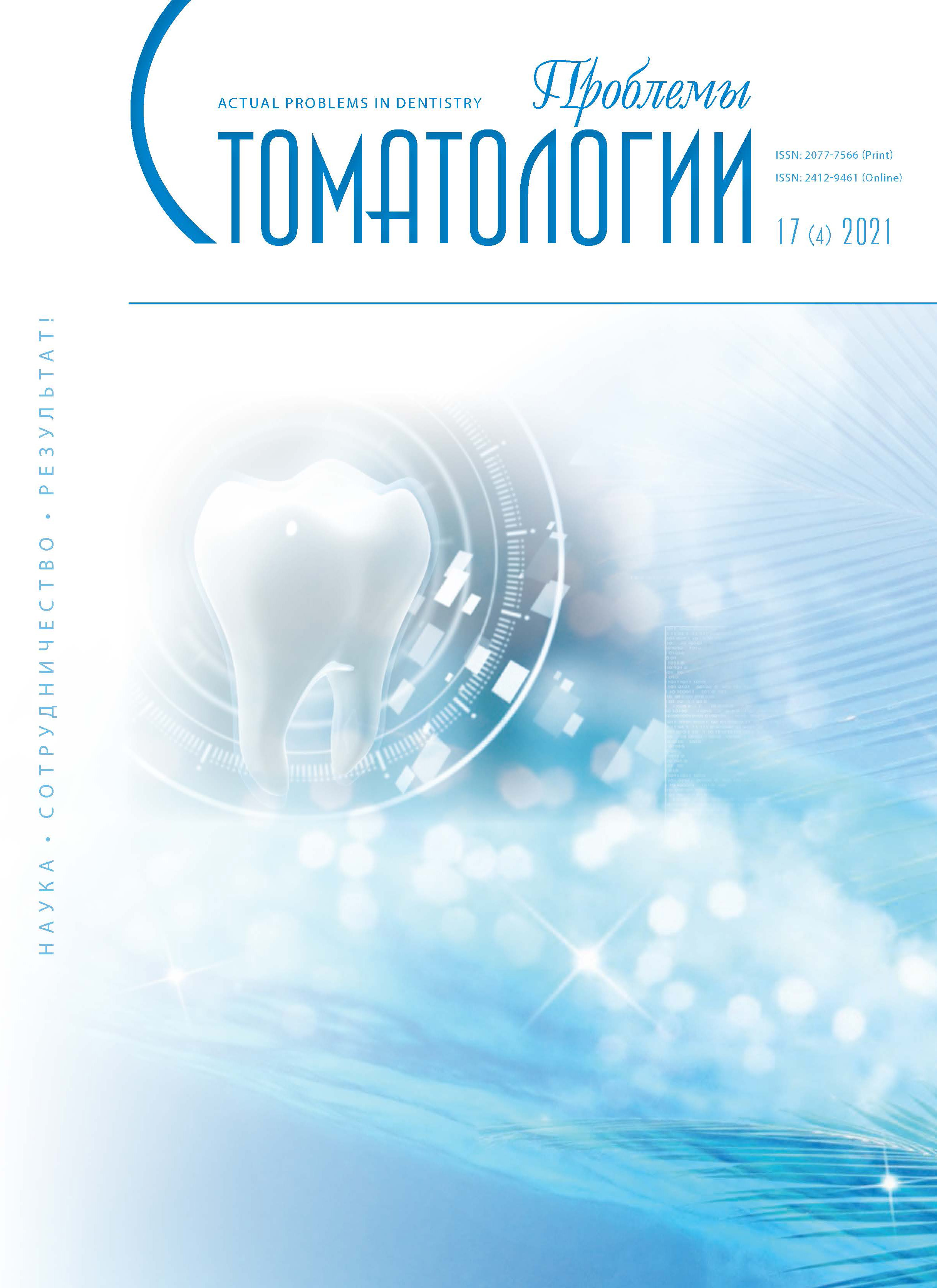Nizhniy Novgorod, Nizhny Novgorod, Russian Federation
Nizhniy Novgorod, Nizhny Novgorod, Russian Federation
Nizhniy Novgorod, Nizhny Novgorod, Russian Federation
Currently, occlusive splints are widely used for the treatment of TMJ diseases. However, the manufacturing errors of occlusive splints for the treatment of TMJ diseases still remain not fully understood, which determined the purpose of this study. The purpose of the study is to identify and study errors in the technological manufacture of occlusive mouthguards (tires) for the rehabilitation of patients with musculoskeletal dysfunction of the TMJ and other diseases of the TMJ. Materials and methods For this study, an examination was conducted in 30 patients with a distal shift of the TMJ condyles within 1-1.5 mm. 3 occlusal splints were made for 30 patients according to technologies (Fig. 3-4): 1. Cold polymerization of plastic 2. 3-D printing techniques, Fig. 2. 3. CAD-CAM-manufacturing-milling, Fig. 1. Revealed a discrepancy in the size of the occlusal bus and the control model when comparing them by zones (points) that were previously accepted for analysis by us. Research results: We consider it important to note that a comparison of CAD-CAM bus scans with a scan of a virtual control model in stl format revealed no errors, the images were superimposed along their boundaries in the hamulus pterygoideus and incisive papilla sections. Conclusions 1. The 3D printing technique makes it possible to technologically create occlusal splints adjacent to the dentition with high accuracy. 2. Milled occlusal tires have a bending strength of 115 MPa, which gives an advantage in this parameter in comparison with 3D printing technology – 80-90 MPa. Occlusal tires made on a 3D printer are superior to milled tires in elasticity. 3. Occlusal splints made according to the traditional method of plastic polymerization, when compared with two other materials, have lower rates of adhesion to the dentition.
musculoskeletal dysfunction, occlusal splints, TMJ, 3-d scan, control model
1. Hvatova V.A. Klinicheskaya gnatologiya. Moskva : Medicina. 2015:296. [V.A. Khvatova. Clinical gnathology. Moscow: Medicine. 2015:296. (In Russ.)]. https://www.elibrary.ru/item.asp?id=19559695
2. Manfredini D. Visochno-nizhnechelyustnye rasstroystva. Moskva : Azbuka. 2013:500. [D. Manfredini. Temporomandibular disorders. Moscow: Azbuka. 2013:500. (In Russ.)]. https://www.dental-azbuka.ru/books/raznoe/kniga_131.html
3. Brokar Daniel', Lalyuk Zhan-Fransua, Knellesen Kristian. Bruksizm. Moskva : Azbuka. 2015:89. [D. Brocard, J.-F. Laluk, C. Knellesen. Bruxism. Moscow : Azbuka. 2015:89. (In Russ.)]. https://kingmed.info/knigi/Stomatologiya/Ortopedicheskaya_stomatologiya/book_3678/Bruksizm-Daniel_Brokar_Jan-Fransua_Lalyuk_Kristian_Knellesen-2009-djvu
4. Ryabov S.V. Kliniko-anatomicheskoe obosnovanie oformleniya okklyuzionnoy poverhnosti zubnyh ryadov : diss. … kand. med. nauk. Tver', 2005. [S.V. Ryabov. Clinical and anatomical substantiation of the design of the occlusal surface of the dentition: diss. … cand. med. Sciences. Tver, 2005. (In Russ.)]. https://www.elibrary.ru/item.asp?id=16175929
5. Bekreev V.V. Diagnostika i kompleksnoe lechenie zabolevaniy VNChS : avtoref. dis. … kand. med. nauk. Moskva, 2019. [V.V. Bekreev. Diagnosis and complex treatment of TMJ diseases: abstract dis. … cand. med. Sciences. Moscow, 2019. (In Russ.)]. https://www.dissercat.com/content/diagnostika-i-kompleksnoe-lechenie-zabolevanii-visochno-nizhnechelyustnogo-sustava



















